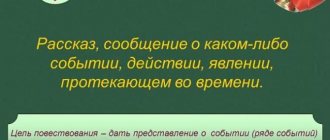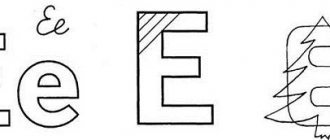Open Russian language lesson in 2nd grade
Russian language lesson in 2nd "B" class
Subject:
“Spelling words with an unstressed vowel sound at the root.”
Goals:
generalize and supplement students’ knowledge about the spelling of unstressed vowels at the root; develop written language and the ability to accurately answer questions.
The objectives of the lesson will be achieved by solving problems on the formation of universal educational actions.
Lesson objectives:
1. In the field of personal control and management:
-formation of value-semantic orientation;
-development of one’s own self-esteem of the material learned in the lesson.
2. In the field of regulatory control and management:
- setting an educational task, taking into account existing knowledge and knowledge acquired in
lesson process;
- ability to plan your work;
-learn to predict, control, adjust and evaluate your activities -
ness.
3. In the field of cognitive UUD:
-formation of logical actions of analysis, comparison, establishment of cause-
investigative connections;
- formulation and formulation of the problem, independent search for its solution.
4. In the field of communicative UUD:
—
the ability to cooperate fruitfully with the teacher and peers in searching and collecting
information;
- formation of the ability to work harmoniously in a group, in pairs;
- formation of the ability to fully and clearly express one’s thoughts, using skillful speech.
Equipment:
textbook “Russian Language” by V.P. Kanakin, V.G. Goretsky, notebooks, blackboard, projector, envelopes with tasks for groups, spelling dictionaries.
1. Organizational moment.
-So the bell rang. Let's start our lesson. I wish you effort, understanding and desire. Learn a lot of new things in order to write correctly.
2. Updating knowledge.
(slide)
-Answer the questions!
-What is the name of the main part of the word?
-What needs to be done when solving a problem?
-Continue the phrases: a) the letters of the Russian language are divided into consonants and ...;
b) words that are opposite in meaning are called....
The words appear on the board: root
examination
vowels
antonyms.
3. Determination of the topic and purpose of the lesson.
-Who guessed what problem we will be working on today?
-Yes, we will explore the unstressed vowels at the root of the word.
-Which word is the odd one out of those on the board? (antonyms).
-But if it appeared in class, then such words will be useful to us today.
-What goal will we set to solve the main problem of the lesson? (learn to correctly write words with an unstressed vowel at the root of the word).
-Well done!
4. A minute of penmanship. (slide)
-It’s autumn outside, November leaves covered the ground like a blanket with multi-colored patterns. When have we encountered such a picture?
-Yes, when they wrote an essay based on the picture.
-What time of year after autumn? ( Winter)
Who draws patterns in winter? (Frost)
-Then let's write the patterns in the notebook.
5. Formation of new skills. (slide)
a) An algorithm for identifying an unstressed vowel and a method for checking it.
On the board there is a slide:
SHOCK –
STRONG –
-Choose antonyms for these words. So we needed these words.
Students call:
UNHAPPY
WEAK
-Let's try to formulate a way to check the unstressed vowel at the root of a word using this scheme.
-What does the concept of “unstressed vowel” mean? (fuzzy).
Then the children reason according to the above diagram:
To write a fuzzy vowel correctly, you need to make it clear, i.e. from a weak position to a strong one, from an unstressed one to a shock one.
-What position for a vowel is considered strong? (under emphasis)
-What needs to be done for this? (change the word or choose a test word so that the vowel becomes stressed, that is, it acquires a strong position and becomes clear.
-What do we call a word that helps us understand which vowel we should write? (check)
-What do we call a word in which the vowel position is fundamentally weak? (verifiable)
Phys.
A moment for the eyes.
6. Vocabulary work.
(slide)
POKSHDETSZHSCHDHA
— Cross out the letters in the chain that represent unvoiced sounds and you will find out the word that you need to remember in class today (Clothes).
— What is the lexical meaning of the word clothing.
(A collection of objects that cover the body.) Children come to the conclusion that not all unstressed vowels can be verified. For example, in the word "clothes" you cannot check the "o".
-This is a dictionary word, you need to remember it.
- Write down the word, put the emphasis, underline the unstressed vowel that you need to remember.
7.Phys. Just a minute.
8.Work on the topic.
Exercise 146 (p.96)
— How do you know which letter needs to be checked in a word? (It is necessary to put emphasis, emphasize unstressed vowels, highlight the root)
- Name the test words for each word.
— In which words did you change the form of the word to check?
— In which words did you select words with the same root to check?
- Write down the test word first, then the word being tested.
— Draw a conclusion: how to choose a test word? (Children's answers).
- Read it correctly and tell me if you made the right conclusion.
10.Repetition of the studied material.
Exercise 148 (p.97)
— What is shown in the pictures? (Candle, rooks, goat, balls, fox).
- Write down the words, omitting the letter indicating the unstressed vowel sound at the root of the word.
— Explain how to check a letter, insert the letter and the word.
— Did you check the word by selecting words with the same root or another form of the word?
11. Lesson summary. (slide)
- What did we learn in class today?
— Why do you need to be able to check unstressed vowels at the root? ( To write words correctly).
— How do you know which letter should be written in place of an unstressed vowel sound?
12. Reflection.
You have the sun on your desk, clouds and sun behind the clouds.



